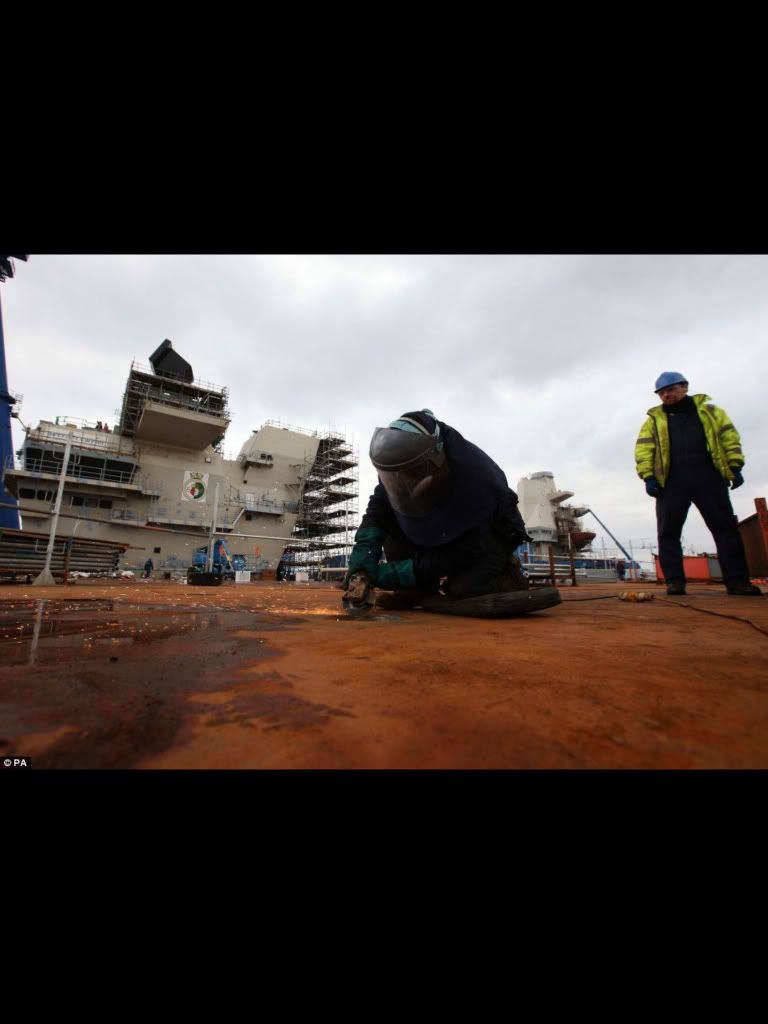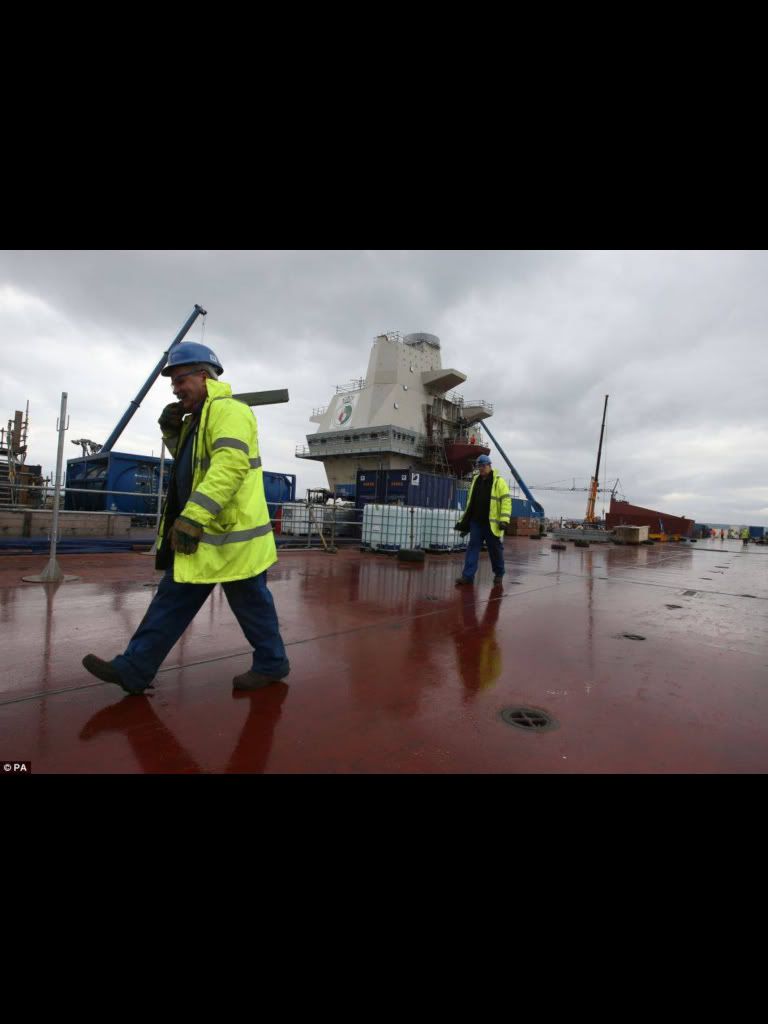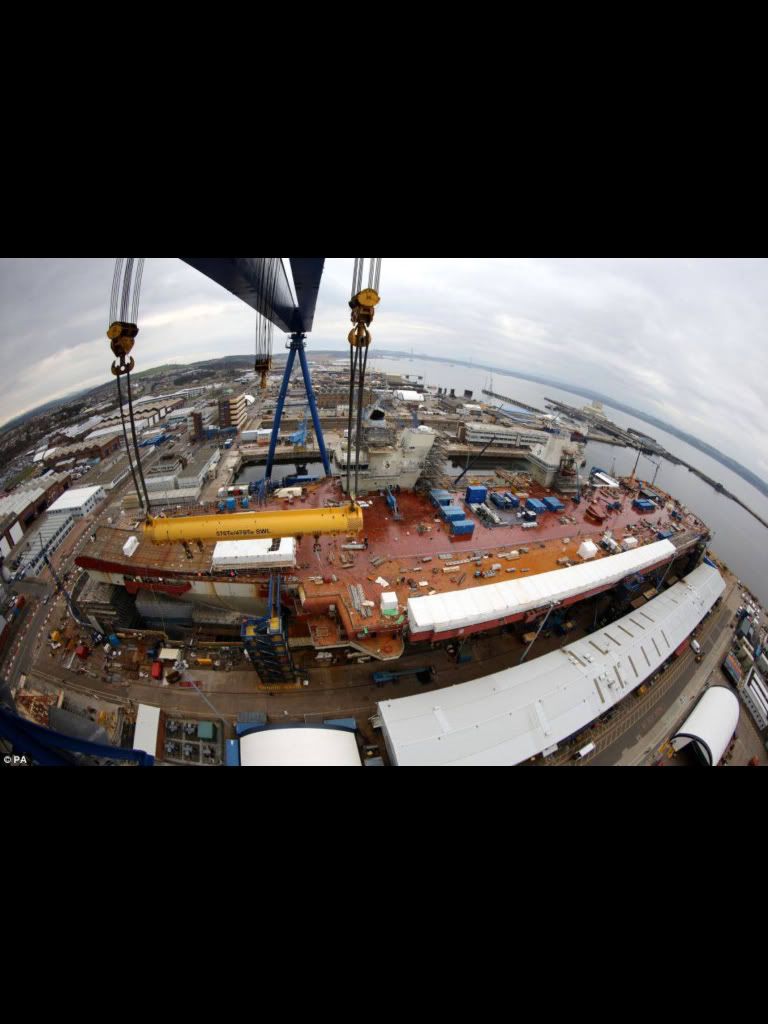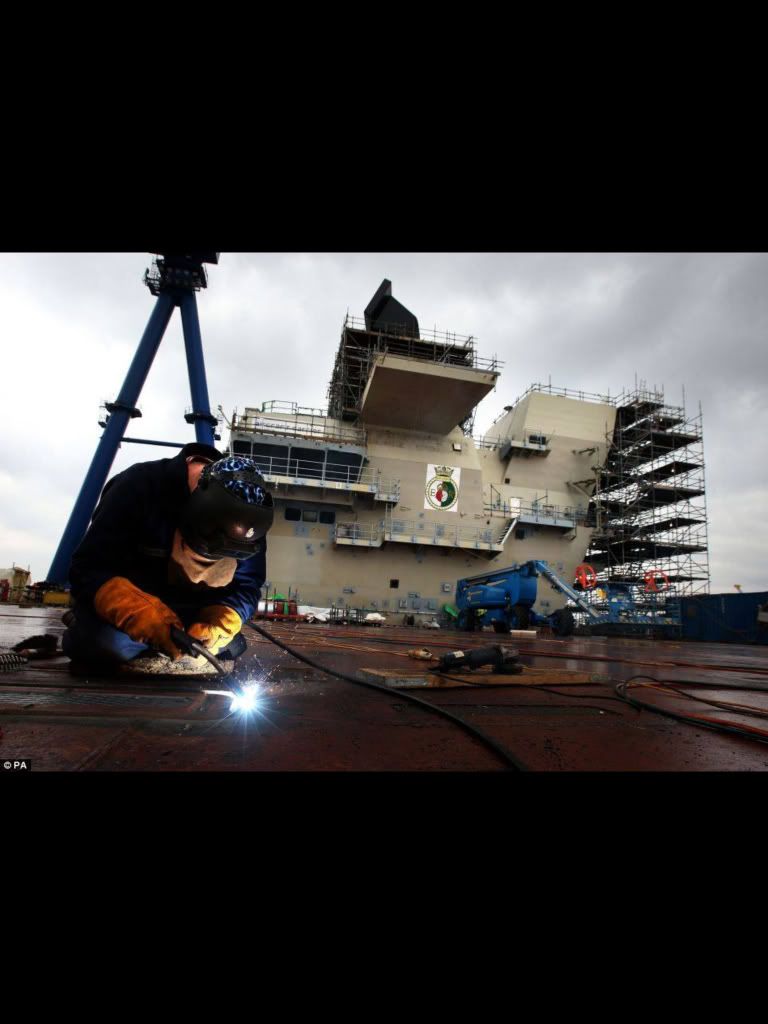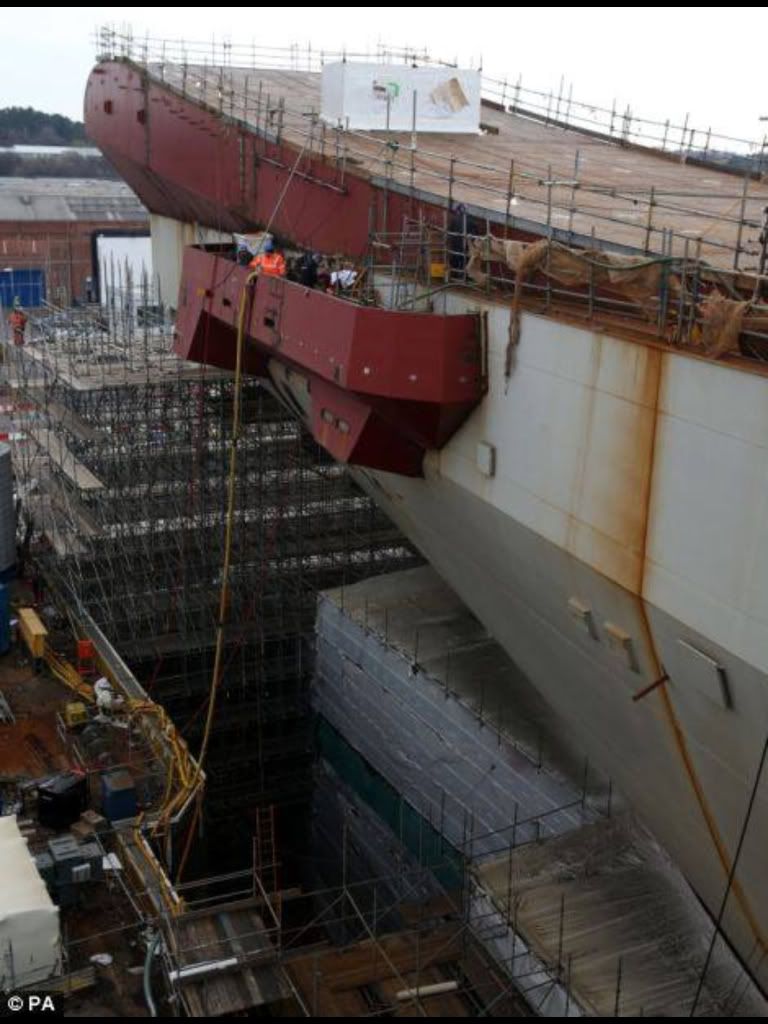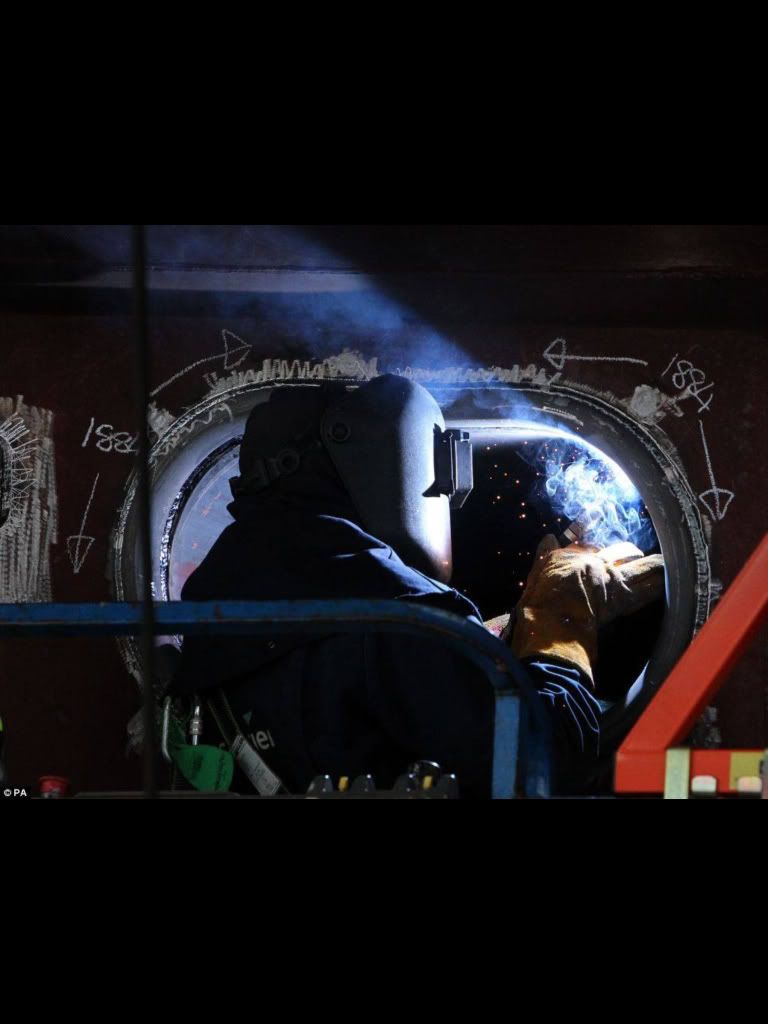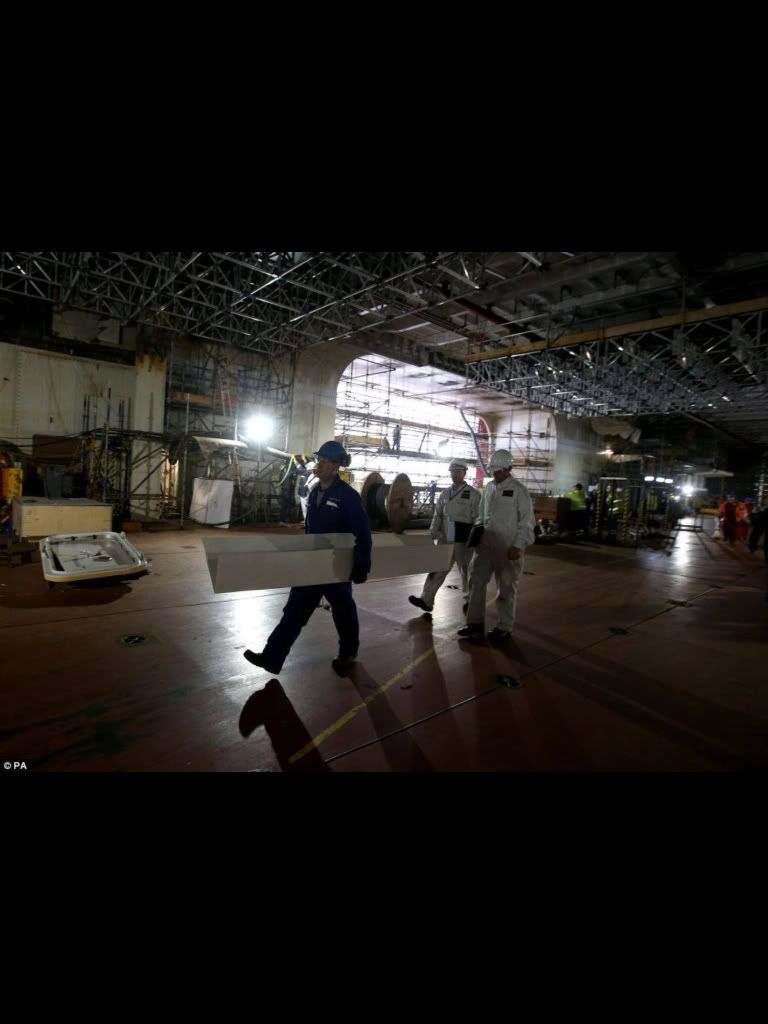AVIATION
The vessels are capable of deploying a variety of aircraft in large numbers, up to a maximum in the upper fifties in surge conditions. In addition to the F-35B, the air wing is expected to be composed of a ‘Maritime Force Protection’ package of nine anti-submarine Merlin HM2 and four or five Merlin for airborne early warning; alternatively a ‘Littoral Manoeuvre’ package could include a mix of RAF Chinooks, Army Apaches, Merlin HC4 and Wildcat HM2.
Tabloids often like to quote 12 as the maximum number of F-35B’s the carrier will be able to carry, however this, as you probably know, is nonsense. The carriers, in peacetime, will usually deploy with 12 F-35B’s as a minimum and a number of various helicopters. To reduce costs and free aircraft for other commitments, the maximum aircraft complement will not usually be carried in peacetime, it instead will be supplied as required or deployed to the vessels in the event of a crisis. Rather than funding a large and permanent Carrier Air Group, the relatively new concept of a Tailored Air Group rather than fixed Carrier Air Group will be adopted for the Queen Elizabeth class with the exact types and numbers of aircraft embarked being adjusted to meet current requirements and threats.
Six deck landing spots are envisaged, but the deck could be marked out for the operation of ten medium helicopters at once, allowing the lift of a company of 250 troops. The hangars are designed for CH-47 Chinook operations without blade folding and the V-22 Osprey tilt-rotor.
The hangar deck measures 155 by 33.5 metres (509 by 109.9 ft) with a height of 6.7 to 10 metres (22 to 33 ft), large enough to accommodate in excess of twenty fixed and rotary wing aircraft. To transfer aircraft from the hangar to the flight deck, the ships have two large lifts, each of which are capable of lifting two F-35-sized aircraft to the flight deck in 60 seconds.
Uniquely for a vessel of this type, it will be common to see the jump-jet F-35B appear to land conventionally. This is a process called Shipborne Rolling Vertical Landing (SRVL). It is a process designed to land jump-jet aircraft that uses both the vertical thrust from the jet engine and lift from the wings, thus maximising the payload an aircraft can return with and stopping the financial waste that comes with dropping expensive weaponry in the sea in order to land vertically.
SRVL landing is under development for use with the F-35B when it enters service with the Royal Navy in 2018. Rolling landings will enable the F-35B to land on these carriers with an increased weapon and fuel load and will use the aircraft’s computer controlled disc brakes. However, a number of defence analysts have suggested that operational SRVL landings may only be possible within a limited range of sea states and weather conditions.

